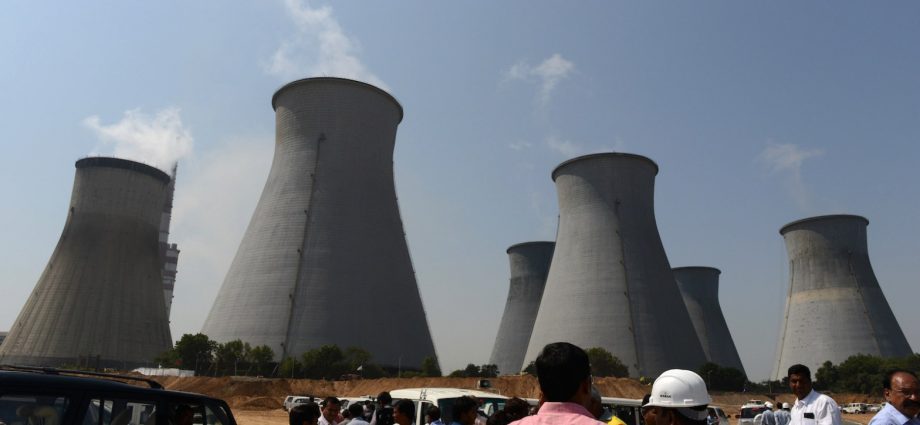In February 2023, India’s government announced that the Geological Survey of India found around 5.9 million tonnes of lithium reserves in the Salal-Haimana region of Jammu and Kashmir.
Lithium is sometimes termed “white gold” for its strategic importance as an essential metal in electrification. But India faces several challenges in capitalizing on its lithium deposits.
The discovery of lithium in Jammu and Kashmir expands India’s known lithium reserves. Lithium deposits have previously been found in Karnataka, Kerala and Rajasthan. Australia is the largest producer of lithium in the world with 50% of global supplies, while Chile, Argentina and China account for 23%, 14% and 12% of production respectively.
Lithium is used in portable electronics, electric vehicles, energy storage systems, medical devices and satellites. Lithium batteries can enable a shift to clean and renewable energy sources that would result in significant reductions of countries’ carbon footprints.
India could strategically benefit from its own lithium production in several ways. India could move towards energy independence, by reducing its need to import lithium and eliminating the associated risks of supply chain disruption. Domestic lithium extraction could enable India to develop advanced technologies of the future like electric vehicles and renewable energy storage systems.
To this end, India’s government has launched several initiatives to promote the domestic production of lithium-ion batteries. These initiatives include the National Electric Mobility Mission Plan and the Faster Adoption and Manufacturing of Electric Vehicles scheme.
The production of cost-effective and sustainable power sources could boost India’s economic growth. New jobs could be created and revenue from lithium exports could generate new revenue streams.
But India would face stiff competition in transforming raw lithium into manufactured goods. China is the world’s largest producer of lithium-ion batteries.
Chinese manufacturers have invested heavily in battery production capacity and they have been able to achieve economies of scale and reduce production costs through innovation and automation. Chile and Argentina may also have a comparative advantage in producing low-cost lithium because of their low extraction costs.
India’s energy consumption has grown at an average annual rate of around 5% over the past decade, driven by population growth, urbanization and industrialization. India is the world’s third-largest energy consumer, after China and the United States.

But India’s energy mix remains heavily dependent on fossil fuels. Coal, for example, accounts for around two-thirds of India’s electricity generation. About, 2.4% of Indian households are not electrified yet.
India’s government has set ambitious targets to increase the share of renewable energy in the country’s energy mix — to achieve 450 gigawatts of renewable energy capacity by 2030.
Large Indian cities like Delhi, Mumbai, Kolkata and Chennai have high levels of air pollution, underscoring the need for cleaner energy. Whether India can leverage its lithium reserves to reach these targets will come down to policy decisions.
Many countries with large lithium reserves — including Bolivia and Chile — have also faced domestic political pressure to retain ownership of their mineral wealth. India may face similar pressures as it opens lithium mines.
Democratizing mineral wealth ensures that the benefits of resource extraction are shared fairly and equitably among citizens. Valuable mineral resources, such as lithium, can generate significant tax revenue and create economic opportunities for local communities.
India might need to promote transparency and accountability in its lithium mining endeavor, involve communities in decision-making processes and ensure mining revenues are distributed fairly. This could help to promote more sustainable and responsible mining practices, support local economic development and reduce social inequality.
There may also be challenges in mining the newly discovered lithium too. Around 44% of the Reasi district is under forest cover and about 30% of the area is under cultivation. The soil in the area is sedimentary and vulnerable to erosion. The area is ecologically fragile, too, and is prone to earthquakes.
These geographic features could make the newly discovered lithium reserve difficult to mine. Lithium mining involves pumping large amounts of water, which can affect water availability for local communities and wildlife.
Purifying lithium ore also produces large amounts of waste and greenhouse gas emissions. Roads and transportation infrastructure would also need to be established. An environmental impact assessment should be undertaken before the newly discovered lithium is mined.

In 2021, though, India’s Prime Minister Narendra Modi approved mining reforms aimed at opening more sites to mining and making a level playing field for the public and private sectors. The government pledged that these reforms will reduce the environmental damage from mines and make their operations sustainable.
With the domestic manufacturing of lithium-ion batteries, electric vehicle and solar power manufacturing will pick up. India’s Tata Motors already produces the Tata Tiago, one of the cheapest electric vehicles on the market.
While India faces several challenges in scaling up lithium mining, careful planning and investment in infrastructure, technology and sustainable practices could enable it to develop a successful lithium mining industry.
India’s significant lithium reserves provide an opportunity for the country to develop new renewable energy supply chains and potentially achieve energy independence. This would allow India to become a changemaker in sustainable development.
Monika Chaudhary is Associate Professor of Strategy and Finance at IIHMR University, Jaipur and Associate Faculty at Bloomberg School of Public Health, Johns Hopkins University.
This article, republished with permission, was first published by East Asia Forum, which is based out of the Crawford School of Public Policy within the College of Asia and the Pacific at the Australian National University.

